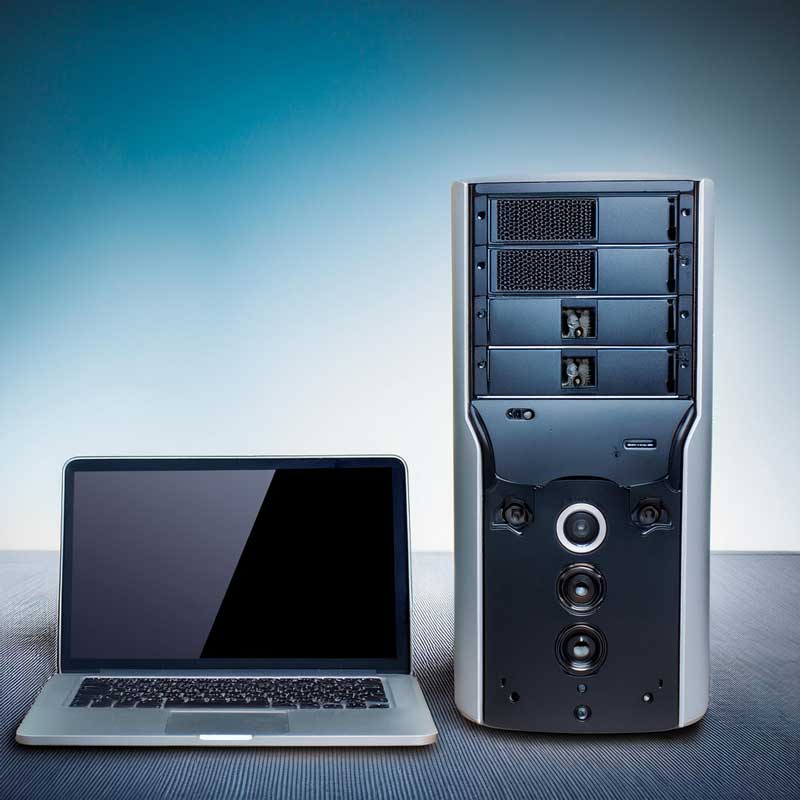 A common question I get is what’s the difference between desktop computers and laptops? Obviously, you can see a big difference in size; but there’s a lot more to it than that. Although most continued differences are attributable to size, others are a bit less obvious. Both systems have pros and cons that affect which one is right for you.
A common question I get is what’s the difference between desktop computers and laptops? Obviously, you can see a big difference in size; but there’s a lot more to it than that. Although most continued differences are attributable to size, others are a bit less obvious. Both systems have pros and cons that affect which one is right for you.
Obviously, a desktop is bigger; and with that size comes a lot of advantages. It’s not quite as “full” as a laptop, so there’s room for air to circulate and keep the system cooler. There’s also room for more fans or a liquid cooling system to make sure temperatures aren’t as much of a problem.
Also, because there’s more room, there’s more possibilities for customization and optimization. Additional data drives, graphics cards and other modifications can be done to a desktop since space is not at a premium as in a laptop. Laptops can be modified, but it still has to fit into the chassis. A hard disc drive can be upgraded, but it can’t be added. Because of the limiting factor of size, many parts of a laptop are soldered in and thus can’t be removed.
Where laptops excel is portability and all the pluses that come with it. Laptops can operate nearly everywhere and are very easy to take with you. Meanwhile, even the smallest desktops require an external power source and a monitor of some sort; and most need adapters added to make them wireless.
A laptop also doesn’t use as much energy as its big brother, making it more economical to use. While the desktop can have more drives and et cetera, all the extra hardware means more juice even if you’re not using all of the extra bits.
Most laptops come with a port for a monitor; it used to be a VGA port but most now have HDMI ports. This allows a laptop to be used as a desktop in many situations, especially in a small house or apartment where space is a consideration.
Whether a desktop or a laptop is better for you depends on your needs and circumstances.
